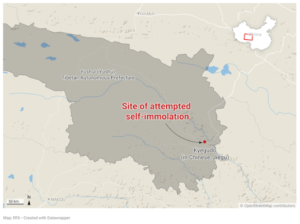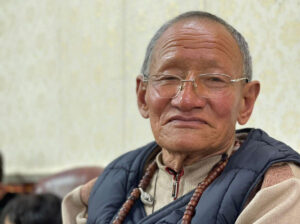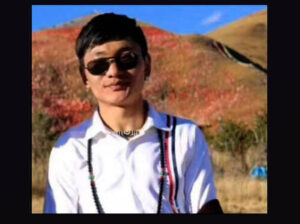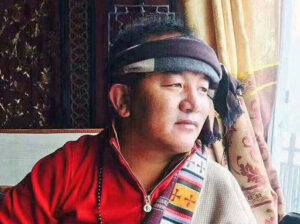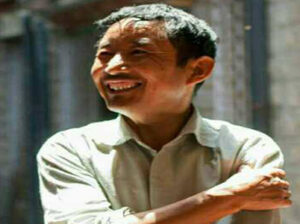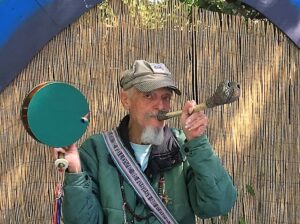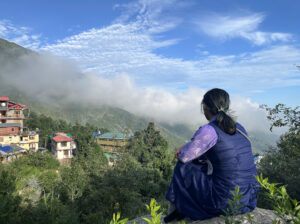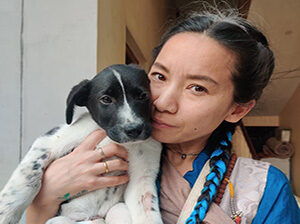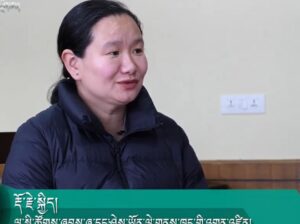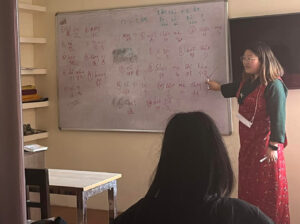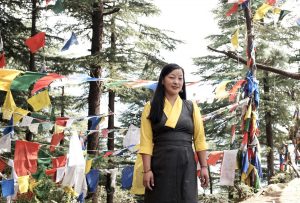
Lhamo Tsering
Photo: Contact/Michelle Hepburn
Lhamo Tsering, who is in charge of the Tibet Museum, the official museum of the Central Tibetan Administration’s Department of Information and International Relations, says she has now found “her dream job”. There, everyday she is in contact with visitors from all over the world who come to the museum to learn about Tibet and Tibetans’ history. “I am very happy here, I enjoy the interaction with people” says Lhamo who loves the job all the more as it gives her access to the many books available in the museum.
The mission of the Tibet Museum is to inform about the Chinese occupation of Tibet, to provide personal accounts of lives lost in Tibet since then and to document the continuous and ongoing abuses carried out by the Chinese government against the Tibetan people. “When visitors come out of the museum they are often very emotional” says Lhamo, who believes that the museum is truly fulfilling its mission.
Lhamo was born and brought up in Ladakh, the second biggest Tibetan settlement in India, where her parents settled after they escaped from Tibet in the 1960s. Though she has never been to Tibet, all her life she has imagined the landscapes of Tibet, drawing them in her mind, from the stories told by her mother and grandmother about their nomadic life. “My mum and my grandmother’s stories are the strongest links I have to Tibet” she says.
That is surely the reason why Lhamo describes herself as being very “passionate and patriotic” for the land of her parents and ancestors as well as very committed to the Tibetan cause. “I was born to serve my country” she says very confidently.
As a child she went to Tibetan Children’s Village (TCV) school Ladakh, where she later taught English for six years, “a very special part of my life” as she describes it, because “as a teacher you can really make a difference”.
Lhamo vividly remembers that her own teachers used to say, “The pen is mightier than the sword”. That has stuck in her head and ever since she firmly believes that education is the key to not only contribute back to her community, but hopefully to getting back Tibet one day. “We have to talk to the world about Tibet and Tibetans” she says.
Her mother, Tsemo, has greatly inspired Lhamo to become involved in the Tibetan community. Tsomo was an active member of the Tibetan Women’s Association (TWA) in Ladakh, an association working for women’s empowerment and whose aim is to promote the social, political, and economic equality of Tibetan women, both in Tibet and in Tibetan exiled communities.
Her mother had wanted Lhamo to join TWA as a member too but Lhamo did more than that: in 2013 she left her teaching job in Ladakh and moved to Dharamshala where she worked for a year at Tibet Charity as an English teacher and volunteer coordinator. Tibet Charity is an organisation supporting the most marginalised sections of the Tibetan community in exile, providing them with access to basic and advanced education as well as free medical services.
Later on Lhamo moved on to work as the Director of Tibet Hope Centre, an organisation whose mission is to empower Tibetan refugees through education and language skills as well as campaigning for the Tibetan cause. After completing a year there Lhamo took the opportunity to work at the main TWA office as Research and Media Officer.
“That was a very special cause for me, women contributing for women”, she explains. “I learned so much and met so many inspiring people. Besides this, my mum, who is uneducated, was so happy that I could contribute to our community thanks to my education”. Today, Lhamo is convinced that it’s time for Tibetan youth to take over from the older generation and to carry on the immense work they have done to preserve the Tibetan culture, as well as working for the development and well-being of their community. “If we don’t do it then who will? That’s why I want to contribute back to our Tibetan community, whether I can make a big or small difference doesn’t matter, as long as I can contribute.” Lhamo takes pride in working at the Tibet Museum, helping to spread awareness about the ordeals suffered by the Tibetan people. That’s her way to give back to the community.
And, to show her deep attachment to her origins as well as the remembrance of the sufferings that her parents went through when they had to escape their homeland, Lhamo has attached her father’s village name “Khotsenang” to her own.
So, when you go to visit the Tibet Museum, do stop by to greet this vivacious young woman, Lhamo Tsering Khotsenang.




 Print
Print Email
Email